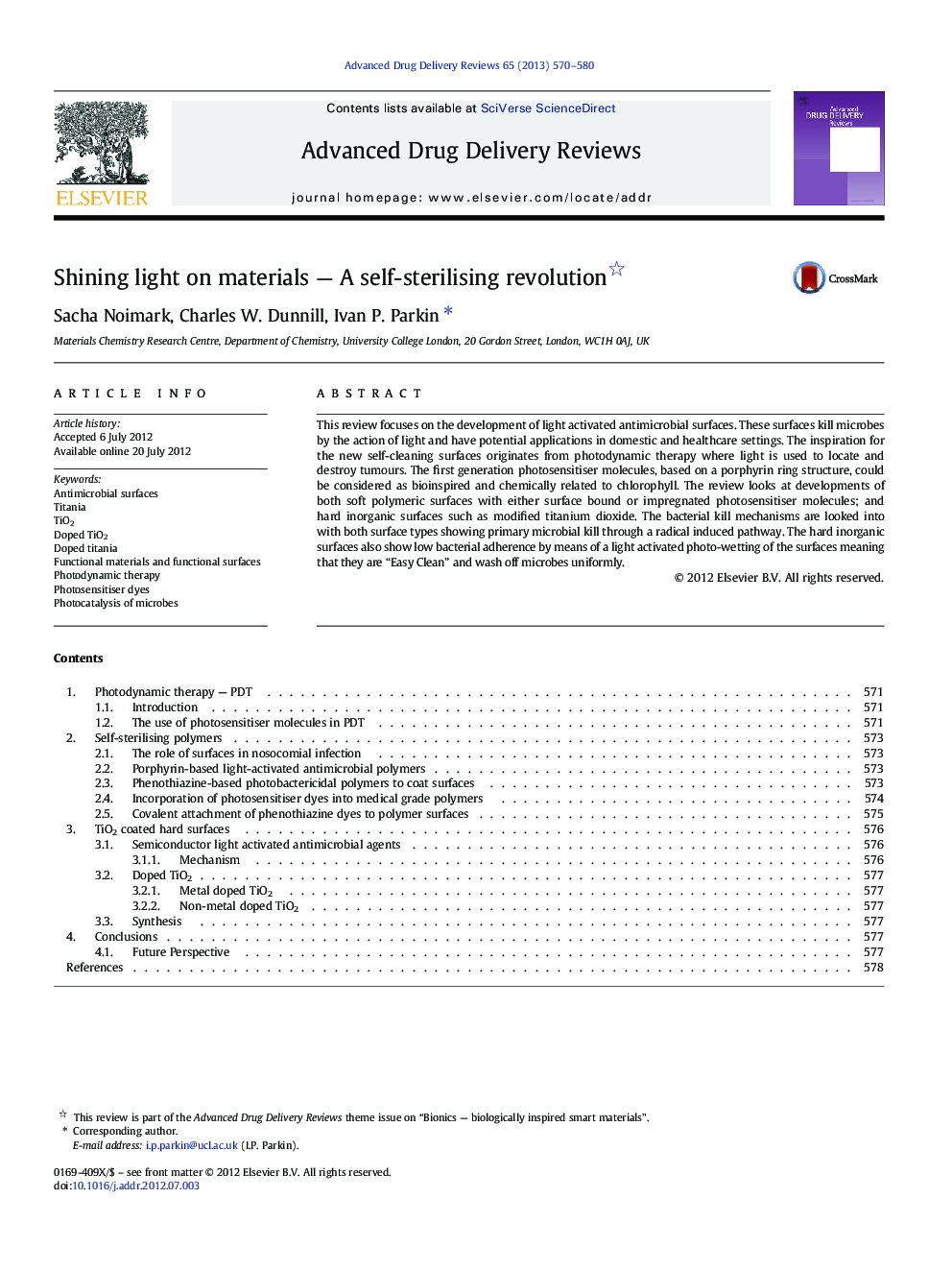| Article ID | Journal | Published Year | Pages | File Type |
|---|---|---|---|---|
| 2070946 | Advanced Drug Delivery Reviews | 2013 | 11 Pages |
This review focuses on the development of light activated antimicrobial surfaces. These surfaces kill microbes by the action of light and have potential applications in domestic and healthcare settings. The inspiration for the new self-cleaning surfaces originates from photodynamic therapy where light is used to locate and destroy tumours. The first generation photosensitiser molecules, based on a porphyrin ring structure, could be considered as bioinspired and chemically related to chlorophyll. The review looks at developments of both soft polymeric surfaces with either surface bound or impregnated photosensitiser molecules; and hard inorganic surfaces such as modified titanium dioxide. The bacterial kill mechanisms are looked into with both surface types showing primary microbial kill through a radical induced pathway. The hard inorganic surfaces also show low bacterial adherence by means of a light activated photo-wetting of the surfaces meaning that they are “Easy Clean” and wash off microbes uniformly.
Graphical abstractThis review explores the recent advances in light activated functional materials for applications in a healthcare environment, looking specifically at the antimicrobial functionality of both hard and soft surfaces.Figure optionsDownload full-size imageDownload high-quality image (429 K)Download as PowerPoint slide
